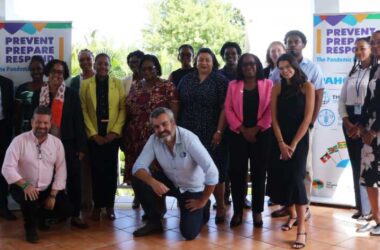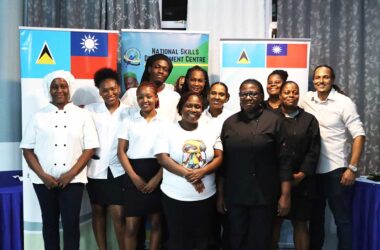DENGUE Fever is on the rise and the Ministry of Health is reminding Saint Lucians to take action. Already, Saint Lucia has 503 confirmed cases, out of which, 128 have been hospitalized. News of the outbreak emerged in August and since then a number of communities have been plagued by the mosquito borne disease including areas like Castries, Bexon and Central Babonneau.
According to the Ministry, 53 percent of the cases are male, indicating a slightly higher occurrence in the male sex. The age group 5-14-years accounts for approximately 39% of cases, of which 57% are male. Fifty-six percent of the hospitalized cases are male, of which the less than 14-year age group is most affected.
In Saint Lucia, all four serotypes of Dengue have been known to circulate and for 2020 both serotypes 2 and 3 have been identified in the population accounting for 14% and 3% of the cases respectively.
The Ministry, in a release, stated that the disease, which stems from the bite of the Aedes Aegypti mosquito, produces a number of symptoms, the most common being fever, headache, pain behind the eyes, muscle and joint pains and a red itchy rash. A characteristic in children is the appearance of glands in the neck. Persons who contract the virus normally develop signs and symptoms five days after being bitten by the mosquito.
Symptoms typically last up to five days with resolution of the fever on day five, however in some cases the fever may persist. This happens roughly in five percent of individuals who progress to the acute form of dengue infection. Persons who reach this stage may experience bleeding from the gums or nose, vomiting blood or passing blood in the stool and/or severe abdominal pain.
There is no vaccine or specific treatment for the disease, however, dengue can be controlled. The Ministry of Health and Wellness is attempting to do so by increasing public awareness, hosting clean up campaigns and examining areas that are possibly affected (amongst other things).
The simultaneous infection of individuals in the same household has been noted in this outbreak of Dengue Fever. It is important to note that Dengue Fever cannot be transmitted from one person to another in the absence of the Aedes Aegypti mosquito. An infected individual and the mosquito are required for the transmission of Dengue Fever.
The Ministry of Health and Wellness is reminding persons to reduce the mosquito population by removing open containers with stagnant water in and surrounding homes on a regular basis (such as flower plates and pots and used tires). In cases where this is not possible, water containers can be treated with larvicides.
Persons should also ensure that water containers, barrels, wells and other water storage tanks are closed properly. Individuals can also purchase door screens to reduce the spread of the disease.
To prevent the bite persons can use mosquito repellents, long-lasting insecticidal treated mosquito bed nets and wear long-sleeved shirts and pants especially during the hours of highest mosquito activity.
The incidence of dengue has increased in the region of the Americas over the past four decades, from 1.5 million cumulative cases in the 1980s to 16.2 million cases between 2010-2019. In the region, the French Caribbean islands are currently experiencing dengue outbreaks with a total of over 17, 000 cases reported cumulatively.













